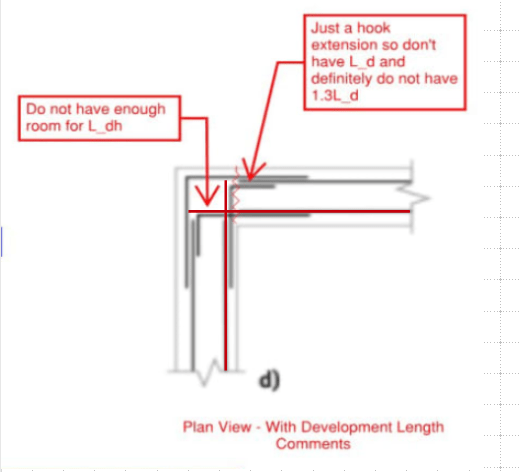JoelTXCive
Civil/Environmental
Another question over the hotly debated topic........Corner Bars!
What happens when a contractor wants to put a construction joint right at the corner?
Background:
We have a TxDOT bridge abutment back wall & wing wall. These are not normally design items. The State has standard details for them. The entire abutment back wall and wing wall region is back-filled with stabilized sand. Both the abutment and wingwalls sit on separate caps and drilled shafts. (these are design items)
The contractor has asked if they can put a construction joint right at the corner.
Below is the corner bar setup with notes.
Questions
1) Should we let them do this?
2) If so, how should we modify the corner bars? (I'm thinking at a minimum we would need continuous bars to extend 1.3Ld on either side of the joint)

Thank you in advance for comments.
What happens when a contractor wants to put a construction joint right at the corner?
Background:
We have a TxDOT bridge abutment back wall & wing wall. These are not normally design items. The State has standard details for them. The entire abutment back wall and wing wall region is back-filled with stabilized sand. Both the abutment and wingwalls sit on separate caps and drilled shafts. (these are design items)
The contractor has asked if they can put a construction joint right at the corner.
Below is the corner bar setup with notes.
Questions
1) Should we let them do this?
2) If so, how should we modify the corner bars? (I'm thinking at a minimum we would need continuous bars to extend 1.3Ld on either side of the joint)

Thank you in advance for comments.



